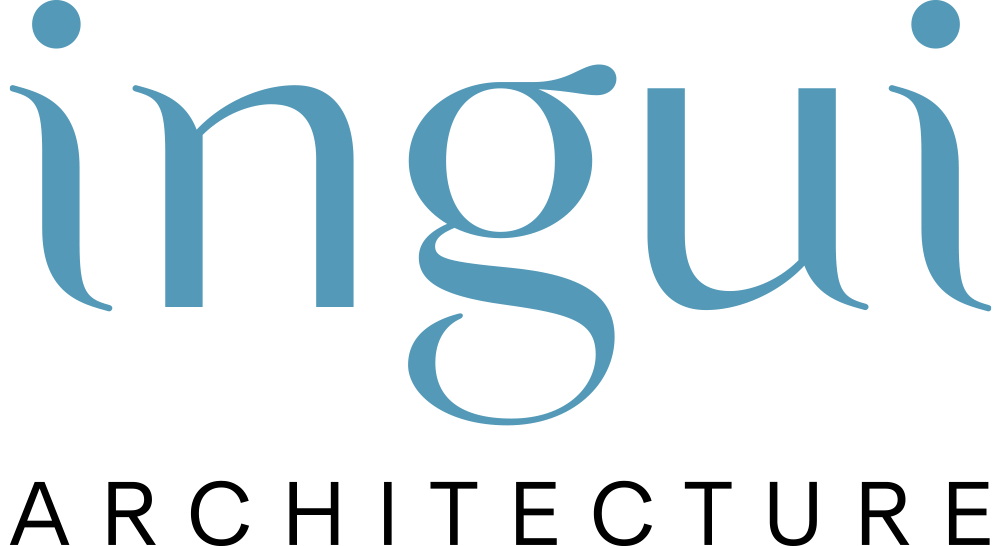Celebrating 40 Years: Interview with Ben Baxt and Mike Ingui
With Baxt Ingui Architects' 40th anniversary approaching, we sat down with Ben Baxt and Mike Ingui to ask them about how it all began. What does it take to create a longstanding and successful firm here in New York City over a period of 40 years? Located in a historic 1907 Art Nouveau building, Ben and Mike sit at the conference table in our office, with views of The Oculus and One World Trade Center behind them.

Interviewer (I): Ben, what inspired you to make the leap in 1977 and start your own firm after being a single practitioner?
Ben Baxt (BB): It is what I always wanted to do. I wouldn't call it so much a leap. It is more that one has so much work that they can't handle it on their own, so they either grow or they do not. It's simple. There is an old saying that goes "the first big job is easy, it is the second one that is tough," — and we got the second one.
I: How did you both decide to officially partner your expertise and create Baxt Ingui Architects?
BB: Mike joined us in 1994, after a very deep recession. The firm was basically down to three people and he was a line architect. He had only been out of school for a very short amount of time. We hit it off — I was impressed by his ability, his commitment, and his drive. It was clear that he brought an enormous amount of value to the practice such that I wanted to make it a very attractive option for him to stay indefinitely. I'm glad, very glad, I did now! Mike became partner in 2000, six years after he joined us, and then became a name partner in 2004.
I: What was the most challenging part of creating a successful practice that could adapt over a 40-year period?
Mike Ingui (MI): I think one of the key aspects, typical of most firms, would be getting and keeping the right employees — those who are able to be creative while also being able to run projects. We are fortunate in that regard; we have a strong team, but managing that and making sure that everyone has everything they need is a key factor.
BB: The single most challenging thing, if you were to try and identify an aspect of practice, is the organizational side. I knew how to make architecture. That is not the same as running a business or a firm. All the management infrastructure we take for granted — whether it be bookkeeping, invoicing, compensation, taxes, insurance, health plans, facilities management, equipment management, or human resources — all of that had to be created from scratch. That had to be done at the same time we were producing and delivering what we like to think of as a very high level of professionalism, which took far more than 40 hours to accomplish for decades. It still takes more than 40 hours a week to do that.
I: Is the firm today what you imagined it would be in 1994 or 1977? How is it different?
MI: When I first started working with Ben, I thought that after a year I would switch firms, because at the time that is what most architects did. I think it was within my first month of working with Ben that I knew I didn't want to leave. One benefit of the office is that it has always been an incredibly nurturing environment where you can learn, really work to your highest ability, and have a lot of opportunity. That is how it was when I started in 1994, and I think we still have that same atmosphere now. This creative and collaborative environment is one of the reasons so many talented people have decided to stay with us, and also how the firm has grown to its current size.
I: What direction do you see the firm taking in the next ten years, if you had to guess?
BB: I think I can speak for Mike and I in that neither of us sees the firm getting significantly larger. I think we see ourselves reconfiguring slightly, due to the experience and competency of some of our most senior people. I think we are comfortable having them take on more responsibility. Hopefully we will all continue to feel as fulfilled in the future as we currently are, specifically with the quality of service and buildings that we work on. I think we always have kept our eye on the most immediate goals. To use a sports analogy: it is this week's game — that is all that matters. If we take our eye off the ball we may drop it, all at the expense of being preoccupied with a hypothetical future. I think that is part of our culture, and I think that will continue to be part of our culture.
MI: I also think the types of projects that we have been developing are becoming more environmentally conscious, whether it is through passive house or other high-performance measures. Having that aspect of architecture integrate more naturally with our projects will be a benefit for generations to come. Also, having the BIA Interiors team means we can provide a full level of service in-house, which has been wonderful. I see a lot of that continuing and developing further in the future.
BB: I think that if the trajectory continues to hold we will be able to be even more selective about the projects we take on. It is not necessarily about size and prestige. It is about professional fulfillment, and sometimes that comes from smaller, less typical projects.

.jpg)
